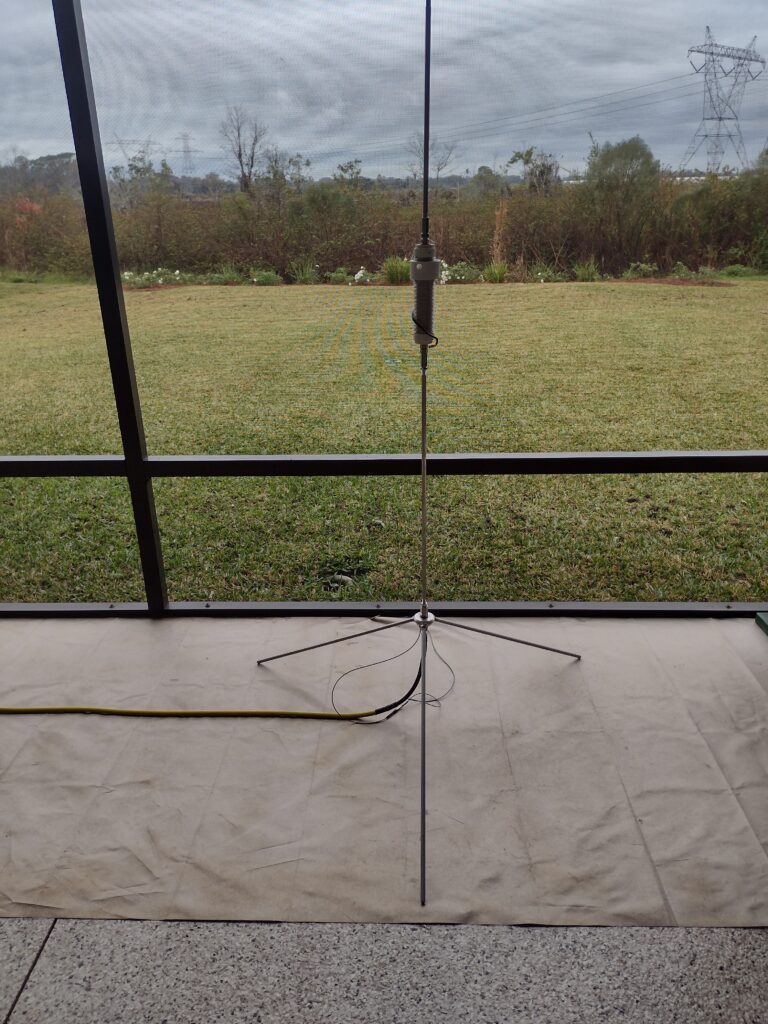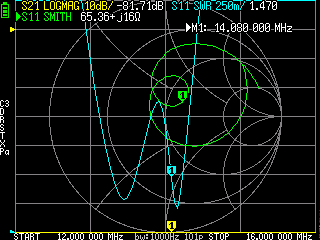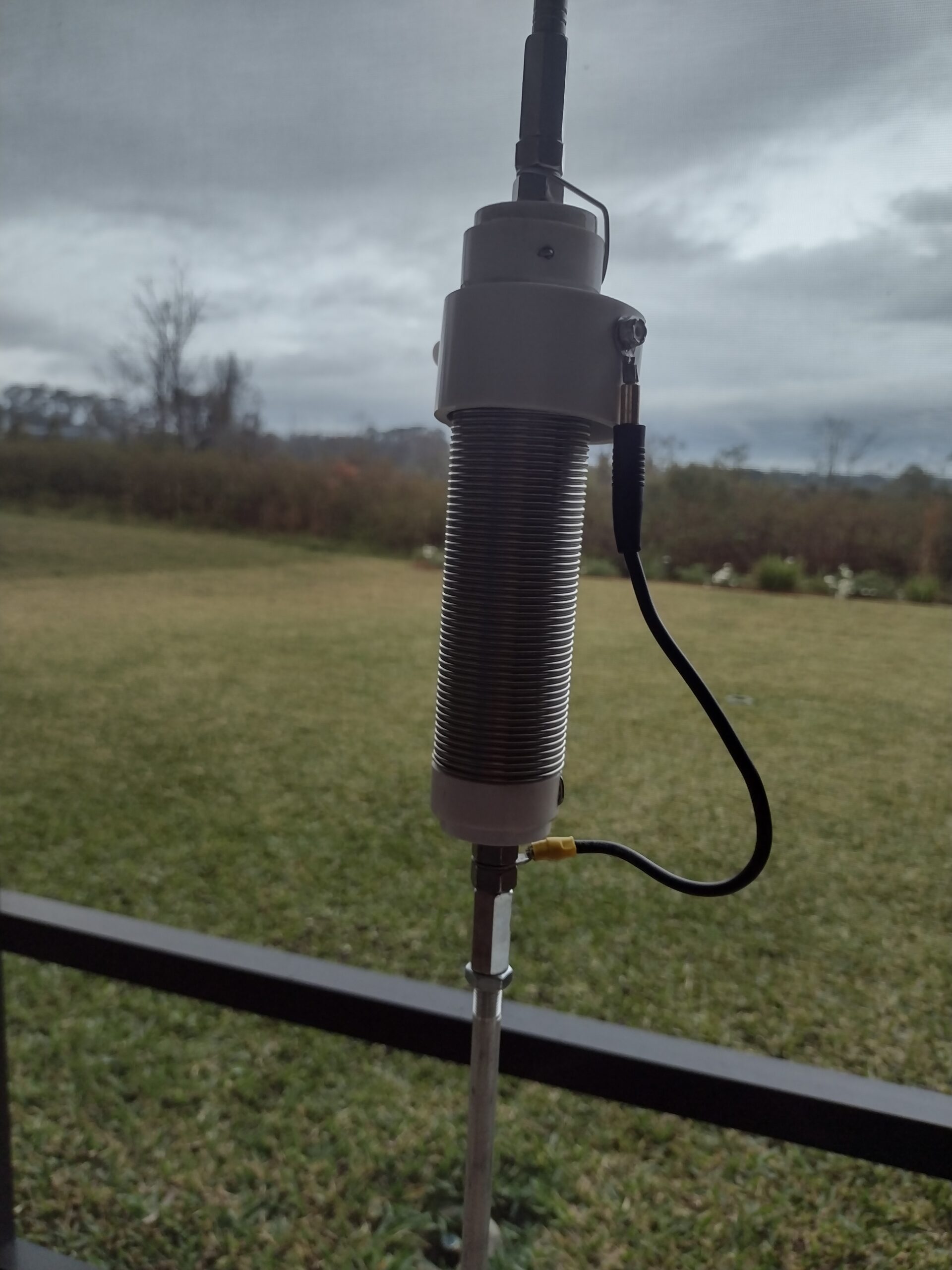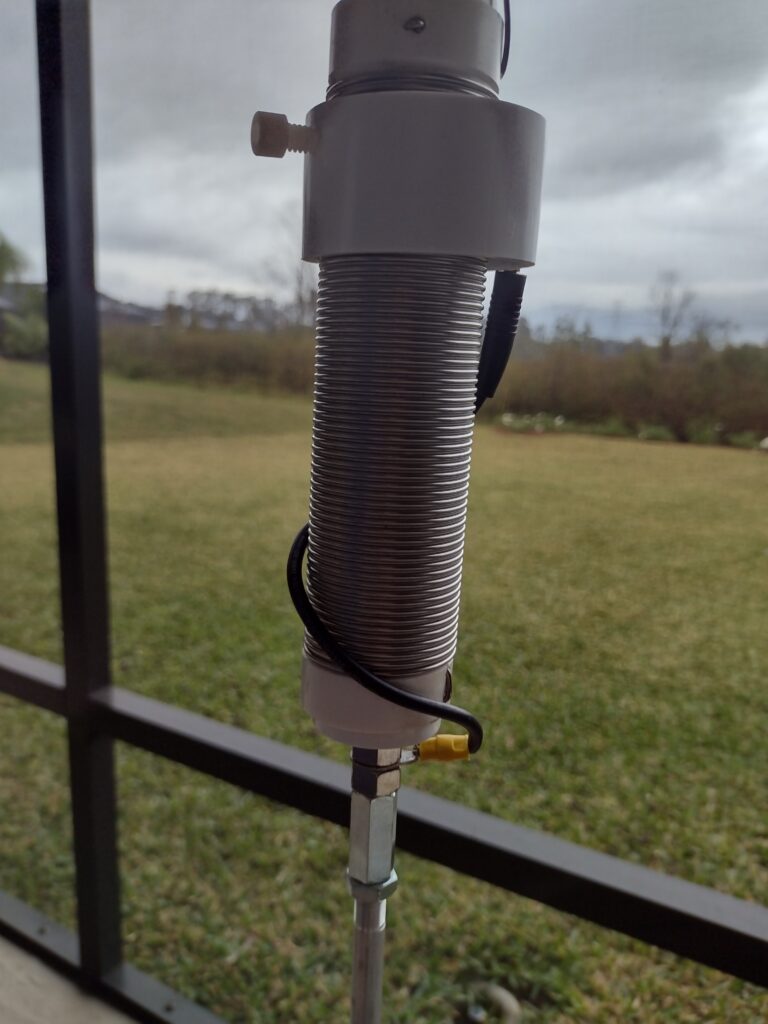Unusual for the sunshine state…
We’re on the 2nd day of a significant storm (weather, not solar) that has brought lots of rain and wind. I am not deploying any antennas outside, other than the roof top 20M dipole. During yesterday’s heavy rain, none of my antennas were very happy. In fact, the roof top 20 wouldn’t tune at all on the TR-45L. So, I start today with a lot of SWR testing before even turning on the radio. All on 20M…
Solar conditions were “Active” due to arrival of recent CME bursts. MUF was above 18Mhz.
The antennas all, other than the RT20, were INSIDE the lanai, sitting on a wet Faraday “magic carpet.”
This picture shows a Wolf River Coils “Take It Along” tripod, with center loaded coil sitting on one extension rod and topped with the 102″ whip. This configuration just fits in the lanai, which has a 10′ ceiling.
Yes, there are power lines nearby, Those are 330kV Duke Energy lines. They are far enough away that they don’t cause noticeable QRM.

- RT20 SWR:1.623 @ 14.040 (Roof Top 20M dipole)
- WRC/CL1 SWR:1.261 @ 14.040 (Wolf River Coil Center Loaded on 1 extension)
- HS20-0 SWR:2.333 @ 14.040 (HamStick 20 on WRC tripod with 0 extensions)
- HS20-1 SWR:1.843 @ 14.040 (HamStick 20 on WRC tripod with 1 extensions)
- HS20-2 SWR:2.000 @ 14.040 (HamStick 20 on WRC tripod with 2 extensions)
- HS20-2 SWR:1.16 @ 13.720 (HamStick 20 on WRC tripod with 2 extensions – Freq too low)
I spent about 40 minutes looking for optimum “stinger” length on the 20M HamStick and this is as close as I could get. Outside, sitting above the radial field, the 20M HamStick atop 2 extensions can be tuned to perfection and performs quite well.
With these results for an inside configuration, I chose to use the WRC/CL1. It worked fairly well reaching NE, OK, TX and KY, with stations weakly heard from UT, AR, MN.

A bit later in the evening, the SWR light popped on, indicating the antenna was no longer in tune, usually triggered at 1.6:1. I like to tune antennas so I can work with NO TUNERS. The faraday cloth had dried out, changing the ground conditions. I adjusted the collar a bit to keep the rig happy. This particular WRC configuration presented a double dip.
That double dip happens when the wire from the bottom of the coil to the collar is flared outward.

Rotate the collar around to keep that wire close to the coil and the curve becomes the standard single dip. Yes, the collar may then need to be moved up or down a click to find the best resonant frequency.

Leave a Reply